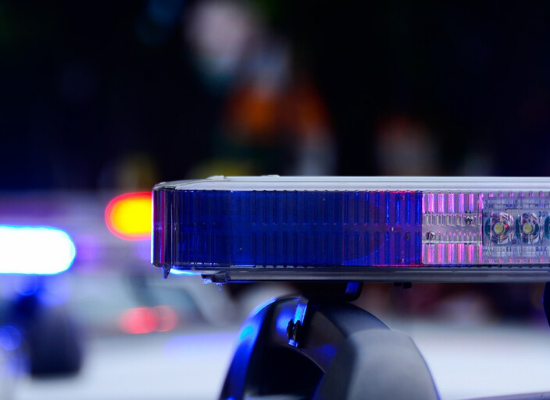
Stephanie Hepburn is a writer in New Orleans. She is the editor in chief of #CrisisTalk. You can reach her at .
“Can you hear that? There are helicopters above me.” The background noise to my interview with Leora Wolf-Prusan, EdD, was the whir of helicopters flying low to the ground in Los Angeles, their blades producing a constant chuff-chuff sound. We proceeded the best we could as she talked about a newly released SAMHSA Pacific Southwest Mental Health Technology Transfer Center (MHTTC) guide on school mental health crisis leadership lessons. It’s a project she and her team had been working on before COVID-19, but the pandemic has made the need for guidance even more critical. Wolf-Prusan wears many hats; not only is she the school mental health lead for the Pacific Southwest MHTTC, she’s also the project director for School Crisis Recovery & Renewal Project, a new national NCTSN TA Center, and is a trainer, facilitator, and more at the Center for Applied Research Solutions (CARS). When asked how, as an educator, she found herself focusing on school mental health crisis, she shared that it started with her graduate school thesis, examining the impact of student death on teachers. It was then that she realized, “grief is the gateway conversation to crisis.”
“No,” she corrects herself, “it actually goes back a bit further.” Wolf-Prusan grew up in an enclosed, tight-knit progressive Jewish community in San Francisco. She spent many hours with her father, a rabbi, meeting with people experiencing profound loss, crisis, and housing insecurity. Particularly formative childhood moments were the deaths of her best friend’s parents. Through his experiences, Wolf-Prusan witnessed how schools can be the “platform for trauma- and community-healing.” Yet, often it wasn’t. Fast forward to early in her career when she was a college and career access teacher coach in Oakland and four students died in 2009-2010 due to gang and gun violence. “No one helped the teachers. We had relationships with the students who died for a year or more, and while the district gave some support to students, no one ever asked us what we needed, so we started holding informal educator support conversations.”
The lack of support Wolf-Prusan and her colleagues received led her to focus on how student gun-violence deaths impact teachers in her thesis. At the time, there was a dearth of research, so she found herself pulling from various fields, including oncology, criminology, and even teacher blogs. “Then Sandy Hook happened, and suddenly, people connected the dots as they heard stories of teachers using their bodies to physically shield their students from harm. It changed the way we talk about educators’ relationship with grief, death, and dying.”
What about Long-term?
In Wolf-Prusan’s cultural upbringing, she witnessed that support isn’t just needed in the moment or immediate aftermath of a crisis, but also in the weeks, months, and years following. “The Jewish faith has clear rituals, and that’s how I grew up understanding the way we navigate loss. These markers help people move through tragedy.” That doesn’t mean marking the anniversary of a disaster per se, but instead commemorating other moments like when a school came together in response to the crisis or implemented a policy enacted to support the school community. She says that balance must be struck to not define people by the disaster they experienced but also name the event that shifted the fabric of their community. “If you don’t, communities run the risk of people still needing affirmation and acknowledgment, and continuing to feel invisible.”
Wolf-Prusan has been working with communities in crisis for many years now, and what’s been a source of frustration for her is that federal support and resources have long focused on readiness, response, and a bit on recovery, but very little on the years after a disaster. “What happens when there’s a school shooting and the students graduate?” She recalls driving two of her students home from the funeral of another student. One student was going to the University of California (UC), Santa Cruz, and the other to UC, Santa Barbara. “We had a whole conversation about how they could still feel connected to this experience, even if not in the physical school community anymore.” Wolf-Prusan says this is particularly applicable during the COVID-19 pandemic where communities are not physically together but having a shared experience that connects us all. She says this is why she added renewal as the fourth “R” to the guide, emphasizing that support can’t stop at recovery.
“Stephanie, I want to apologize to you again. The helicopter is hovering over me!” The whir of its blades sounds even closer than before. Wolf-Prusan has to speak louder as she shares that recovery after a crisis is a misnomer, alluding to people or communities returning to a previous state when in actuality, that’s not what happens. “There is no going back to normal. Yes, people want to go back to the rhythm of ordinary life, but most often, after a crisis, there is rebuilding and an opportunity for reconstruction.” That’s why Wolf-Prusan infused the guide with the words of education leaders who have gone through crises, and what they’ve learned in the process, including educators who use curricula and instruction as the framework to discuss life, loss, grief, crisis, renewal, recovery, and growth. During and after the pandemic, that’s going to look different depending on the community. Some have experienced striking rates of infection but have nearly flattened the curve, while others were barely affected by the initial wave and are now experiencing a resurgent wave far worse than the first.
Schools are places where disasters occur—either on school grounds or within the community, and educators can help their student population navigate them, but there is little discussion on how to do so. Wolf-Prusan says pre-service and in-service workforce training needs to start focusing on crisis and that school mental health leadership is not just in the hands of school psychologists, counselors, and trained professionals but also principals, teachers, and students. “It takes teamwork and centering the dialogue on what steps foster a robust school mental health program and policy approach but place them in the context of crisis.” For example, if schools continue to be virtual during the pandemic, leaders must figure out how to support their teachers and students interdependently. Conversely, leaders need to be supported by policy, practice, and culture but not have “everything fall to them to handle.”
The Camp Fire
Oh, I see it now, there’s a fire. There’s a huge plume of smoke happening. At that moment, Los Angeles firefighters were fighting an immense blaze at a commercial building located near a school. The students were quickly evacuated. Wolf-Prusan starts walking away from the fire, and we both take note that the backdrop to our conversation on crisis is a crisis. It’s then that Wolf-Prusan mentions the Camp Fire, a fire that started on November 8, 2018, on Camp Creek Road east of Paradise in Butte County in Northern California. At least 85 people died, and close to 19,000 buildings burned. A year later, only 11 homes had been rebuilt. The population plummeted from roughly 26,000 to an estimated 3,000.
As a contribution to the School Mental Health Crisis Leadership Guide, Matt Reddam and Sandra Azevedo, both members of Butte County’s coordinated district support team, shared with Wolf-Prusan that even with adequate planning, crisis response can often be reactionary. While there had been planning in the county in the event of a fire, the scope far surpassed what they could have foreseen. So, even though planning and protocol were helpful to some extent, staff had to make rapid decisions to save their students and colleagues. Furthermore, everyone, including students and staff were affected by the disaster. Azevedo and Reddam noted that they were still in shock when they returned to work. In retrospect, they wished they had “strategically and effectively pushed out a communications plan.” They also lamented not having taken FEMA’s Incident Command System (ICS) training earlier. It’s a training designed for people involved with emergency planning, response, or recovery efforts.
In Reddam’s contributive piece, he shared that there are “different leaders for different times and moments,” but, no matter the disaster, it requires leaders to be vulnerable and admit what they don’t know. “At that moment, leaders must face that the crisis response they’d spent years building may very well need to be thrown out,” says Wolf-Prusan. Since working on the ground after the Camp Fire, Reddam has focused on what happens next for students who have been physically displaced from school and are now learning in different buildings. “Leaders had to ensure that the kids weren’t known as “the Paradise kids.” Simultaneously, while it’s important not to label kids by the disaster they experienced, says Wolf-Prusan, it’s also essential to know who they are because they may have a trauma response.
Understanding the Distinctions Between Trauma and Grief
David Schonfeld, MD, FAAP, is director of the National Center for School Crisis & Bereavement at the Children’s Hospital Los Angeles and co-author of the guide. He also serves as a subject matter expert for the Pacific Southwest MHTTC and a special advisor for the School Crisis Readiness & Response Guide. Dr. Schonfeld worked on the ground with administrators at Marjory Stoneman Douglas High School in Parkland, Florida, since the 2018 shooting where Nikolas Cruz killed 17 people and injured 17 others. In a conversation with Wolf-Prusan, he reflected on how our culture and research practices examine grief and trauma, and how, at present, the school mental health world is really interested in trauma but not as resourced or skilled in understanding grief.
There is a tendency to conflate trauma and grief, says Wolf-Prusan, but they require differing supports. While there is overlap, not all grief is traumatic, and not all trauma is related to grief. “My colleague Erica Woodland put it best: ‘the word trauma has come to mean everything so much that in the end it means nothing.’” Initial responses to school disasters have sometimes treated all educators and students as if they were experiencing trauma. “There’s a distinction. People who witness a mass shooting, for example, might show signs of trauma while those who don’t see or hear it may exhibit grief.” That said, students and educators often experience both trauma and loss when there’s a mass shooting in a school, but too often, there’s attention to the traumatic aspect of the disaster without sufficient recognition of the grief they feel in response to loss. Schools need to help their community cope with what they have experienced and what they have lost and will continue to be missing in their lives.
Neither grief nor trauma is bound by time, and the adage that time heals all wounds is not true. For example, Wolf-Prusan interviewed teachers who’d experienced a student death 3 months before the interview and 25 years before. Statistically, time had zero significance. What was significant was whether the teacher had the opportunity to talk to someone about the student’s death. “If the teacher didn’t have a person to speak with 25 years before, they reported low resiliency scores. If the person had access to mental health professionals, felt supported by the administration to speak about the student, and was given information on how to attend the student’s funeral or memorial, their resiliency score was far higher, even if the loss happened just 3 months prior.”
Attending the student’s funeral or memorial, was one of the biggest factors that contributed to teachers’ self-reported resiliency because “it allowed them to feel a part of the student’s life when so often they don’t.” Bob, one of the teachers Wolf-Prusan interviewed, lost 20 students in 25 years to gang and gun violence in South Los Angeles and said that the conversation they had was the first time in his teaching career anyone asked about the impact on him. As she stood to leave, Bob said to her, “I feel like I can actually breathe again.”
You can read the entire School Mental Health Crisis Leadership Lessons: Voices of Experience from Leaders in the Pacific Southwest Region here.
Learn more about the interviewee:
Wolf-Prusan is senior staff at the Center for Applied Research Solutions (CARS), a small California 501(c)(3) nonprofit dedicated to holistic health equity in education systems, public health services, and mental and behavioral health access. In all CARS project work, their mission is to foster safe, healthy, and engaged people and communities. CARS leads national, state, and local TA centers for initiatives in mental health, substance abuse prevention, and trauma-informed crisis response. CARS’ projects include leadership of five SAMHSA-funded TA centers (including the Pacific Southwest Mental Health Technology Transfer Center) to support the mental health of the nation’s children, youth, youth of transition-age, and families, as well as schools and communities after crisis, including the new NCTSN site, School Crisis Recovery & Renewal Project (schoolcrisishealing.org), Crisis and Recovery Enhancement (CARE) TA Center, and serving as the former SAMHSA TA Center for ReCAST, Resilience and Communities after Stress & Trauma. CARS is also based in Sacramento and Santa Rosa, CA; the staff experienced their own crisis navigation during the wildfires of 2017 and 2018.









